NOVEMBER 18, 2021: The day started with us having breakfast, packing up the car, and walking to the tourist office in Torre de Moncorvo to meet Manual for our guided tour of the Jewish sites. Our expectations were not too high, and as we waited for him we wondered if we should have just done the sites on our own. We were supposed to go to five additional towns today, and it was important that we not spend too long here, or we would be behind schedule. Once Manual arrived, and started us on the tour, it was so interesting, that schedule be damned – this was worth spending as long as it takes.

The main square of Torre de Moncorvo
The first story he told us, was about the house across the street from the tourist office. In this house, lived a New Christian (converted Jewish) woman who married the brother of the king. They had a son. When the childless king died, their son as the king’s nephew, was the heir to the throne. He ruled for three years, before Spain took over and he went into exile. So although for a very short time, in Portugal there was a New Christian on the throne.
We also learned that the street we were on, the same street we parked our car on, was where the Jewish craftsman lived, including five shoemakers. The name of the street, Rua de Sapateiros, means street of the shoemakers (sapatos is shoes). They know that this was the Jewish area, because they found tunnels that connect the houses. These were used for escape during the inquisition.
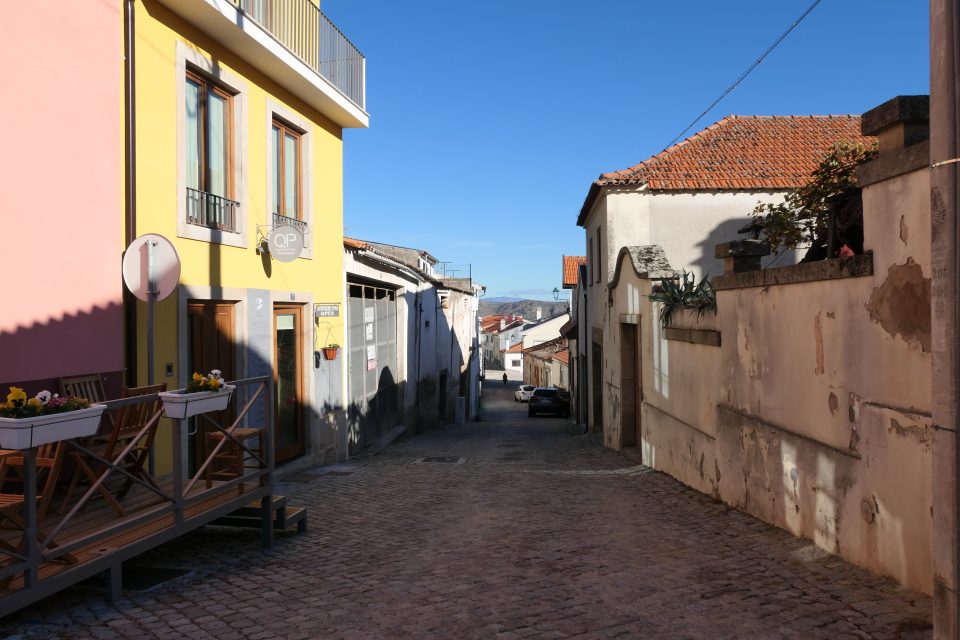
Rua de Sapateiros – the street of the shoemakers
From the tourist bureau we went to where the hidden synagogue of the community had been located. Today it is a Center for Jewish Studies. Here a woman speaking Portuguese, using an audio-visual touch screen, displayed documents showing the earliest mention of Jews in the area as early as the 13th century. Manual translated for us. Afterwards, all visitors are invited to take a photo for their guest book.

In front of the Center for Jewish Studies 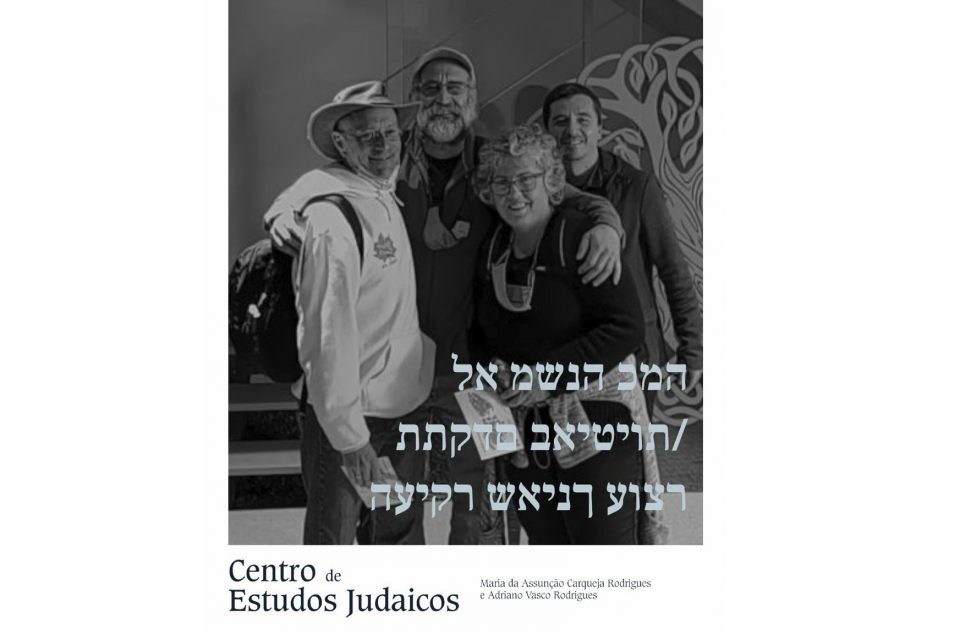
Center for Jewish Studies Guestbook. We pointed out to them that the Hebrew is backwards.
We then went upstairs, where they had a few Jewish ceremonial items. For example, on display was a kippa. One of the items, had these white covered things sitting in a small bowl. We did not understand what that was. Manuel explained that this represents the sugar-covered almonds that the city is known for and these were handed out at weddings. Apparently, the Jews were involved in this trade as well. The best part of the visit was when they put on us VR – Virtual Reality – headsets. With these on, we could see different aspects of medieval Jewish life in Torre de Moncova. When you moved your head, the image moved with you, and you felt like you are inside the picture. Pretty impressive.

Mark with a VR headset
After the Jewish Studies Center, Manual took us to several other sites including the church of the New Christians that backed up against the medieval synagogue, to the tribunal court where Inquisition trials where held, and to the location of the house used as a synagogue, when Captain Barro Bastos tried to revitalize the community in the first half of the 20th century.
On one of the houses in the town, I noticed a sign for sugared almonds. Seeing my interest, Manual took us into a workshop where they today still make the sugared almonds in the traditional way. This involves mixing them with the sugar syrup by hand for eight hours a day for eight days. They were really delicious!
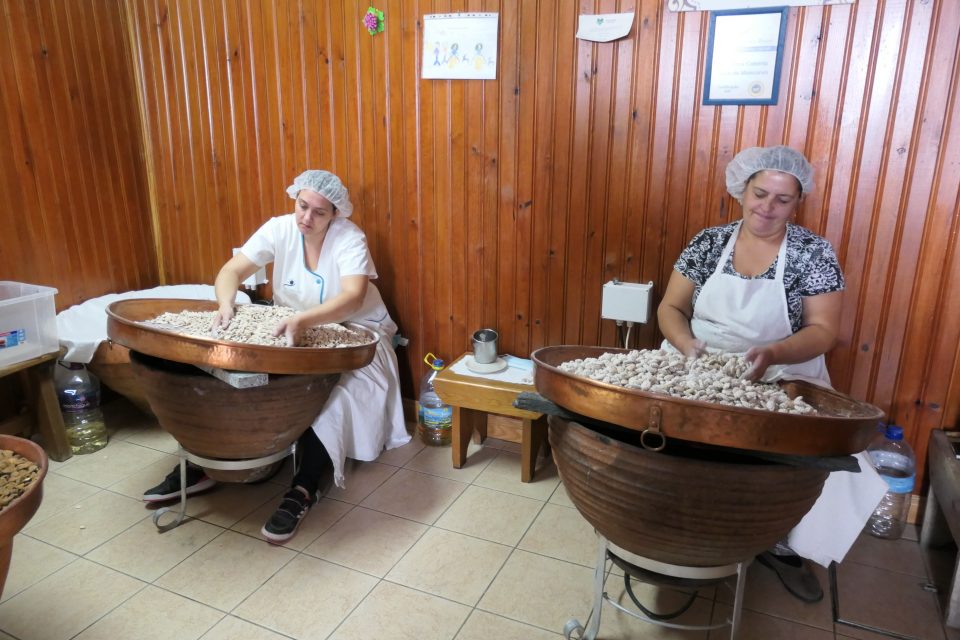
Sugared almonds made the traditional way
We then went into the local church, where he showed us a side alter that was created by a local New Christian. Some of characters were obviously based on Jewish figures.
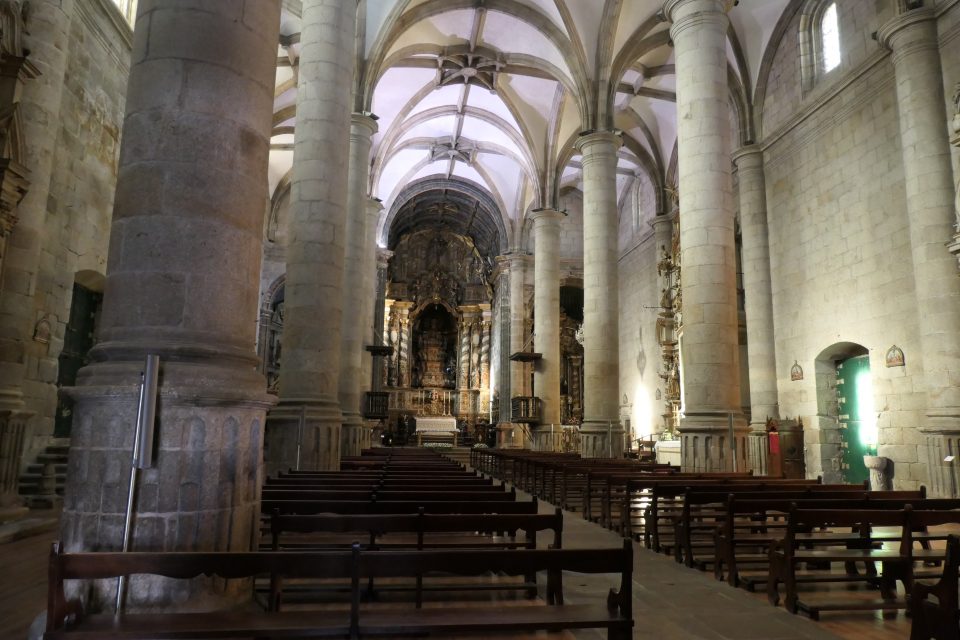
Inside the Église de Notre Dame de l’Assomption 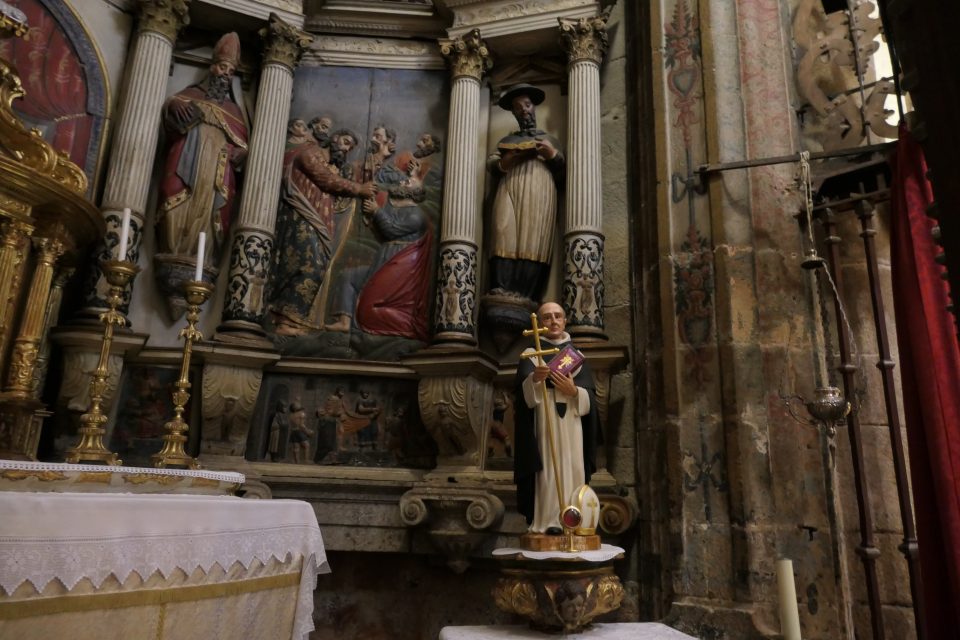
Can you spot the Jewish character?
The last stop was the House of the Inquisition. This was where the clergy who officiated at Inquisition hearings would stay when they came to the village to hear the trials. Today, they show an abstract art movie, to summarize the Jewish experience in the village up to the inquisition. If someone had not been explaining what we were seeing, we would not have understood – like it is obvious that a Magen David made of tree represents the growth of the community?
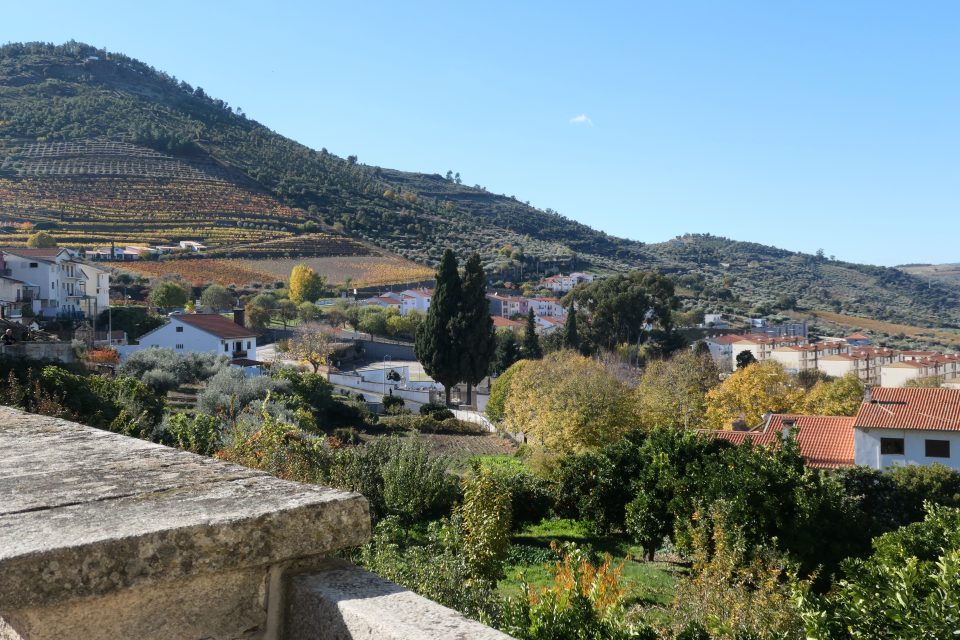
View from the House of the Inquisition
All in all, we were very impressed, both with the extensive knowledge that Manual had and with the effort the municipality made in highlighting its Jewish heritage. The route we had taken was only initiated a few months ago and was part of a larger effort by the current mayor to increase tourism to the village. Not only did he remodel the tourist office, but he ensured that the workers there know the Jewish history and how to guide the route. For those who decide not to use the guide tour, they launched a self-guided mobile app. As you follow the route (map provided by the tourist office or on the internet) you come to signs that indicate a stop on the route. You scan the QR code on the sign to get an explanation of the place. Not only did they highlight their Jewish heritage, they did it with the latest technologies – from the VR headphones in the museum to their own mobile app.
It was already past noon, and time to move on. We decided to forgo three of the little villages on the way, and headed straight for Trancoso. Trancoso is a large town about an hours drive south. If Torre de Moncorvo, a village of only 7000 residents did such a good job displaying their Jewish Heritage, we had high expectations for Trancoso, a much larger place.
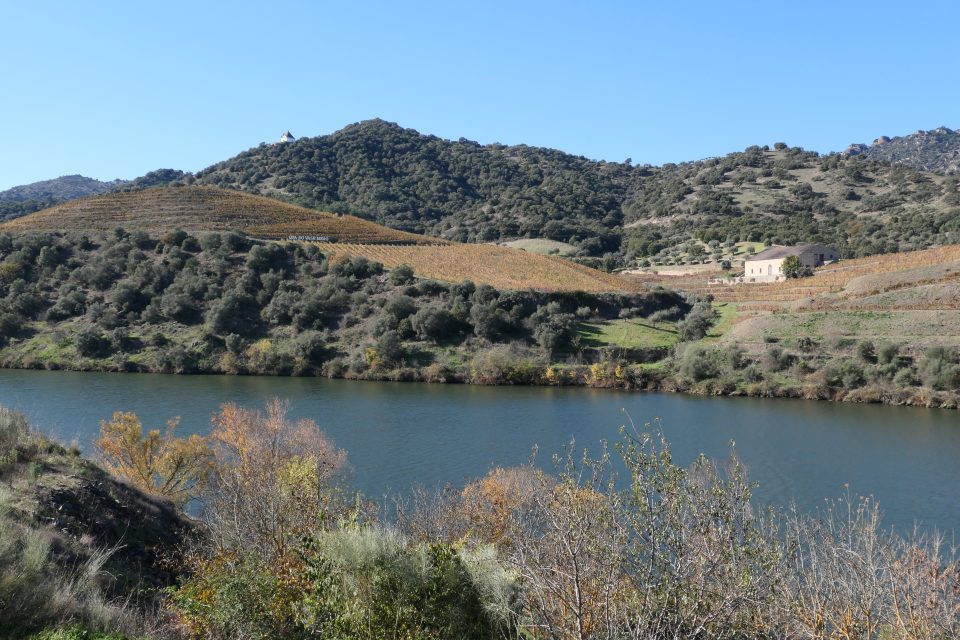
Scenes from the way 
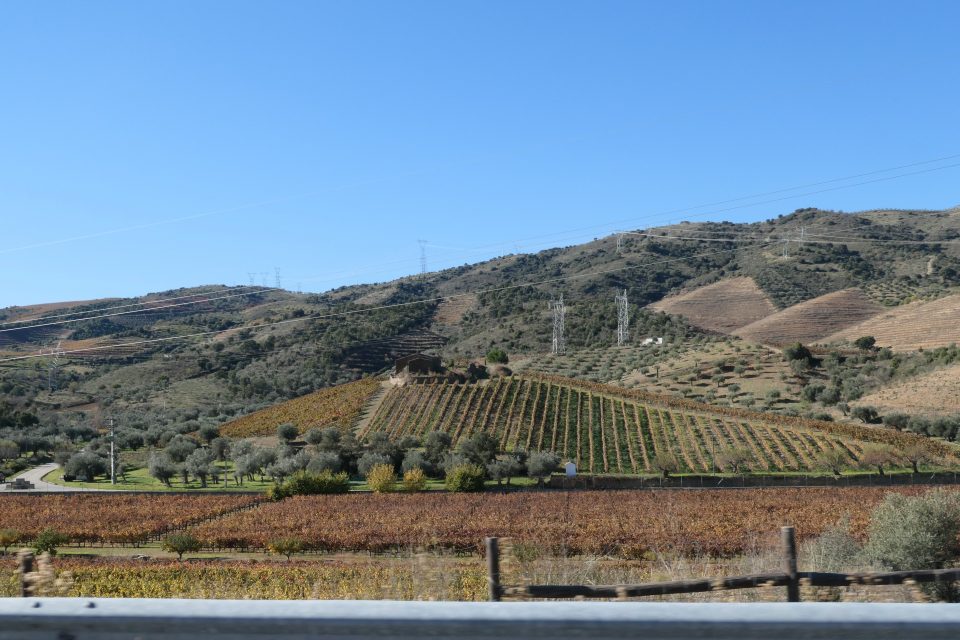
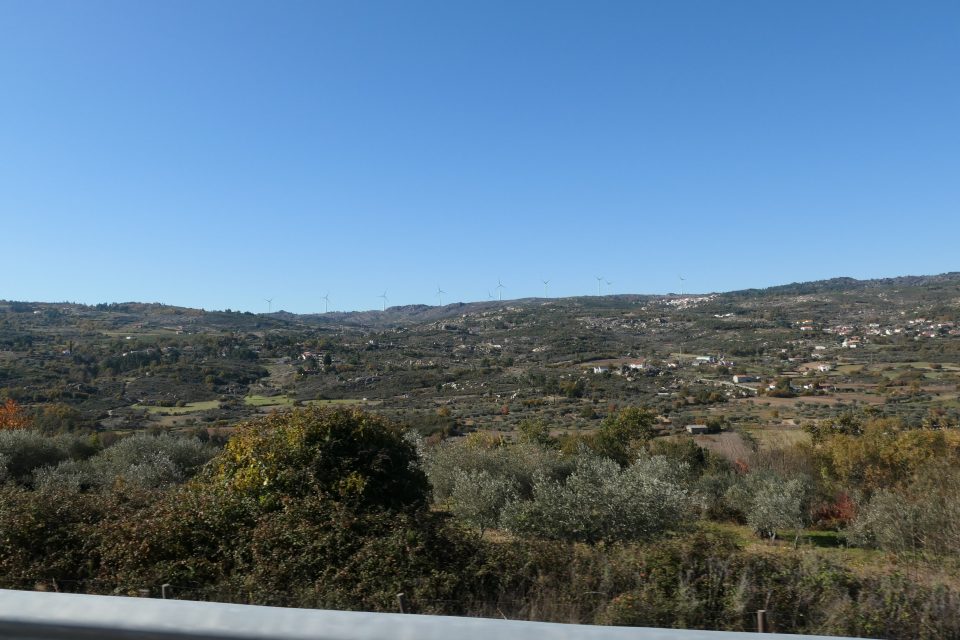
Outside the entrance to the walled city of Trancoso, is a huge parking lot. There is also a very large tourist office which was closed for siesta. This was beginning to feel like a big tourist trap. We entered the city, into a street of stores but everything was closed – siesta seemed to be taken seriously here. Upon looking at the stores more closely, I realized that most are not tourist stores – tourists don’t need a hardware store, a fabric shop, an optometrist, or a wedding dress boutique. These were the stores the locals shopped at. Parking was not necessary for the tourists.
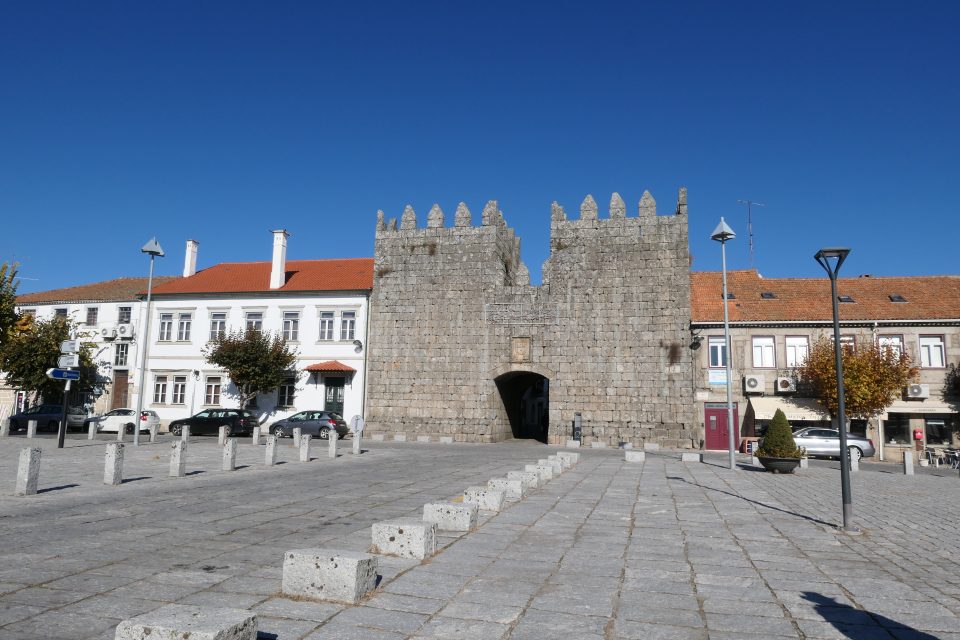
Entrance to the historic district of Trancoso
We had three locations in Trancoso that we wanted to visit – Casa de Gato Preto (the house of the black cat), the Jewish Cultural Center Isaac Cardoso and Casa do Bandarra (the house of Bandarra). On entering the city we saw a sign for the monument to Bandarra and so we started there. More about him later. Although sunny, it was very cold – only 8 degrees Celsius. The steps of the town hall faced the sun, and we sat there for our sandwich lunch.
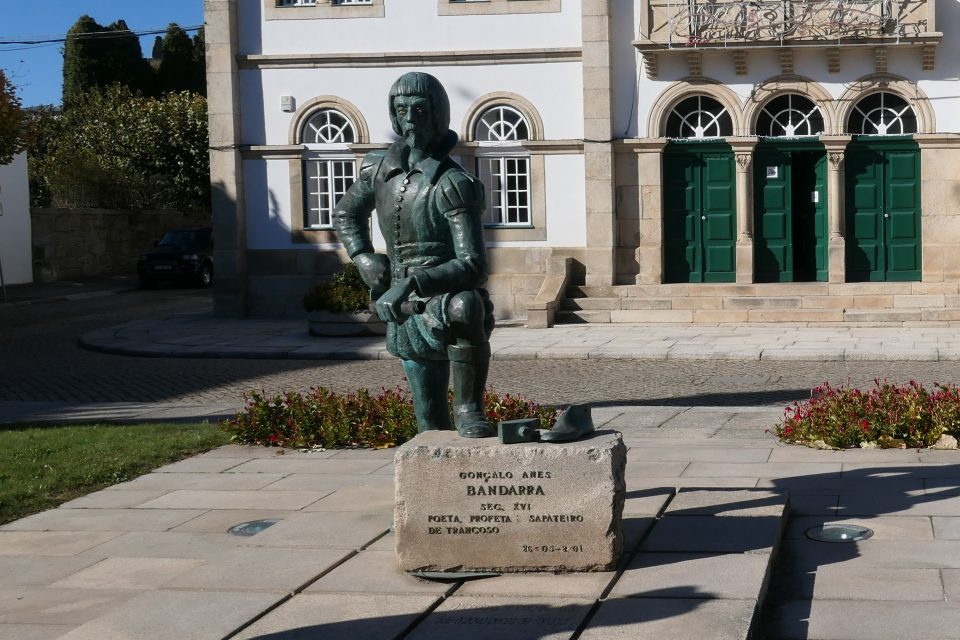
The monument to Bandarra 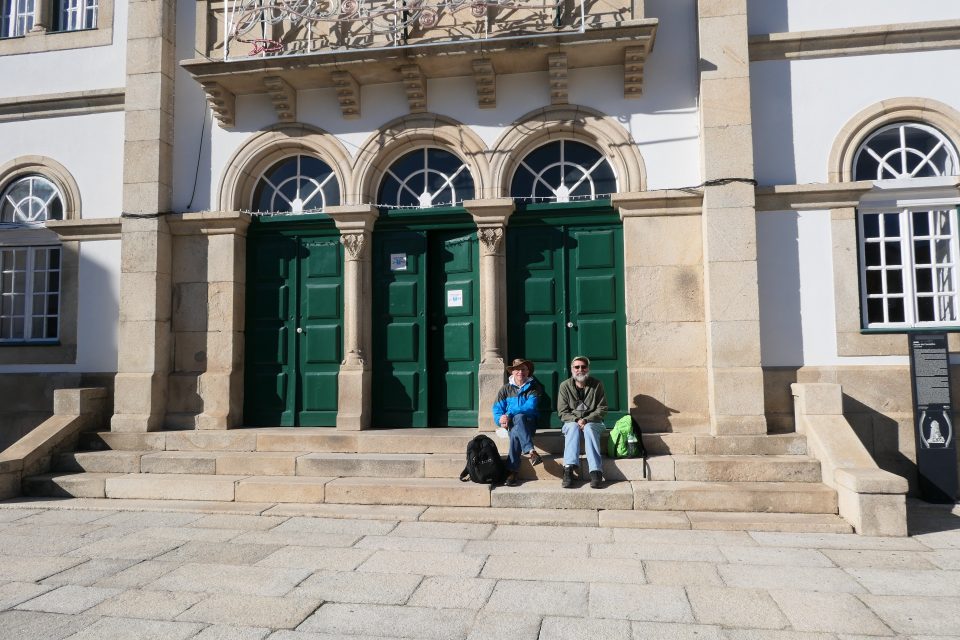
Lunch on the steps of the town hall
Our first destination was the most famous Jewish house in the city – the House of the Black Cat. This was perhaps the rabbi’s house, or maybe even the synagogue. The house is adorned with a lion of Judah.
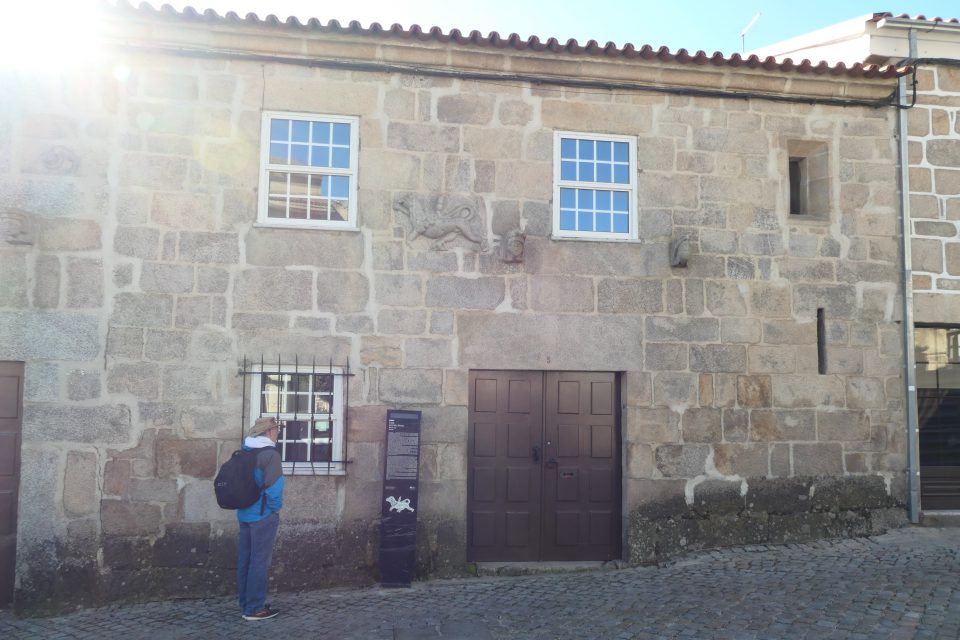
The House of the Black Cat 
The lion of Judah
In Trancoso, there are many houses with engravings on the doorposts to indicate that a New Christian lived there. The sign in front of the House of the Black Cat, gave the address of two of them While waiting for the museums to open, we went looking for them.

To the left of the door you can see the cross with the triangle at the bottom – the sign of a New Christian home 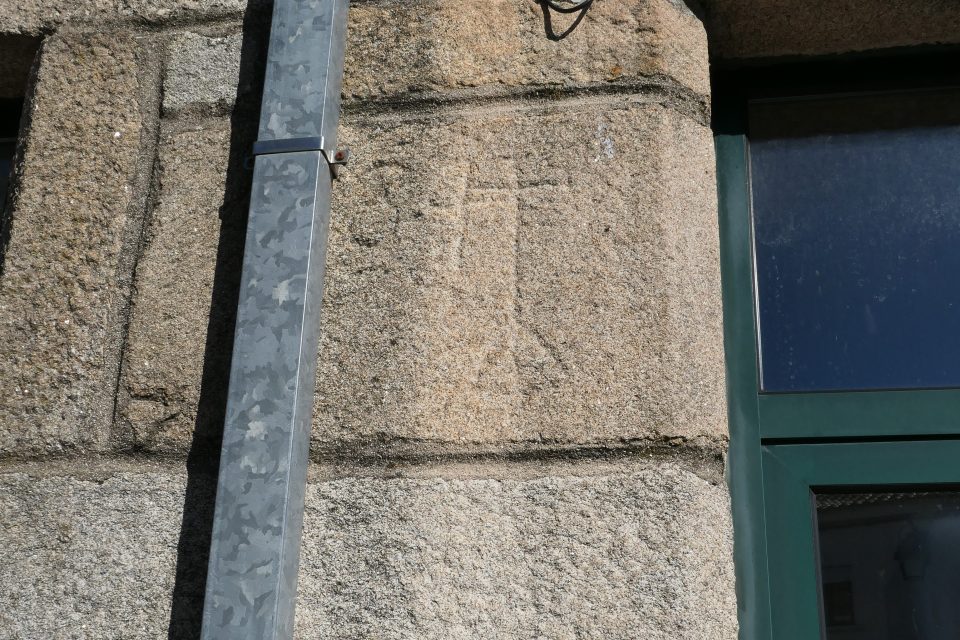
Another one
Jewish Cultural Center Isaac Cardoso is a large modern building. Although it is in the old city, and looks totally different than all the surrounding buildings, with its simplicity, it manages to fit right it. At the entrance to the museum, I was greeted by the worker, whose first question was “Are you a Jew?”. Never have I been asked that so directly before. I replied Yes, we are from Israel. She then took us to see the synagogue. Inside the center is a new synagogue designed with vertical wooden pieces that represent candles to commemorate the different Jewish communities that once thrived in this region. Today it is used mostly by tour groups. Mark and David said their mincha afternoon prayers there.
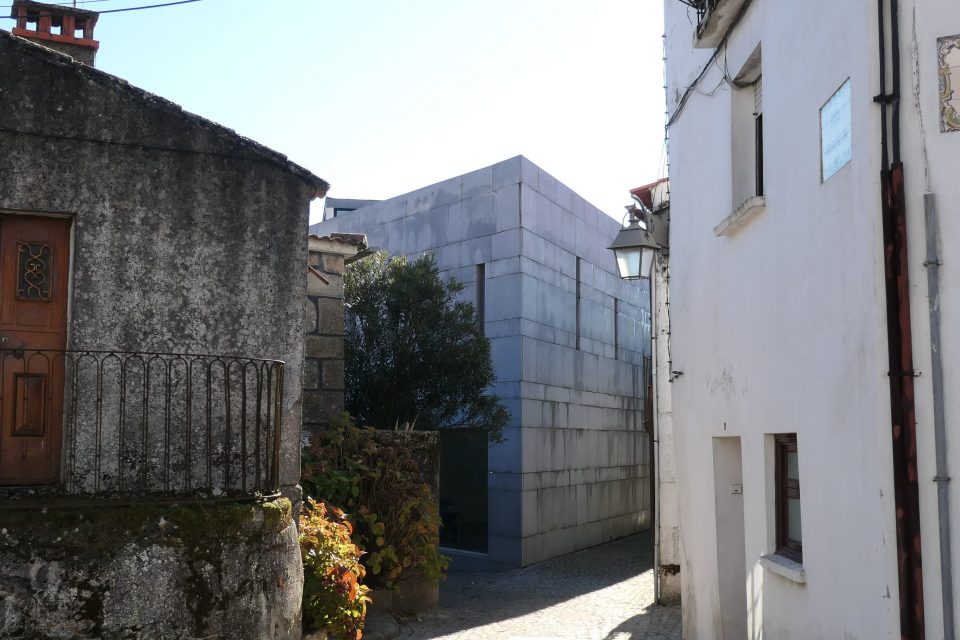
Jewish Cultural Center Isaac Cardoso 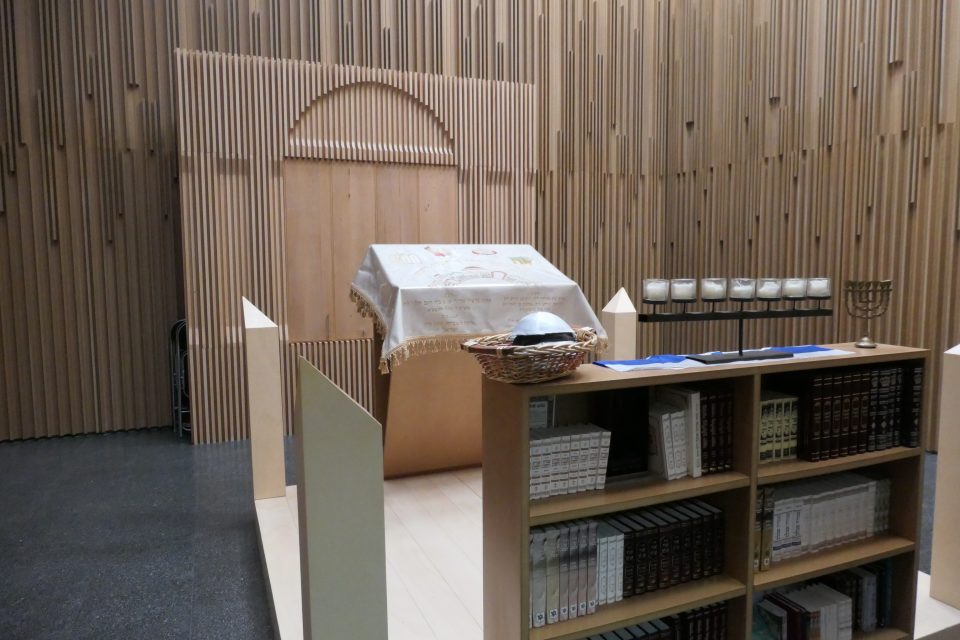
The synagogue
The center basically has three triangular rooms. On the first floor, one room is devoted to the history of the Jews of Trancoso. In another room there is a list of names and the year people were tried by the inquisition. There were over 1000 names. The first name on the list was Gonçalo Anes Banderra.
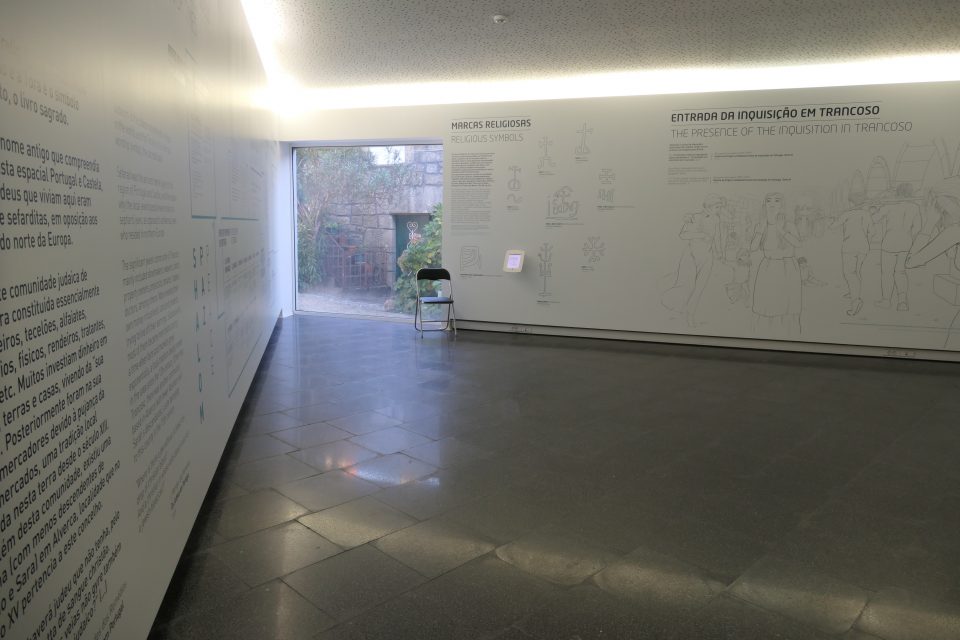
Inside the Jewish Cultural Center Isaac Cardoso 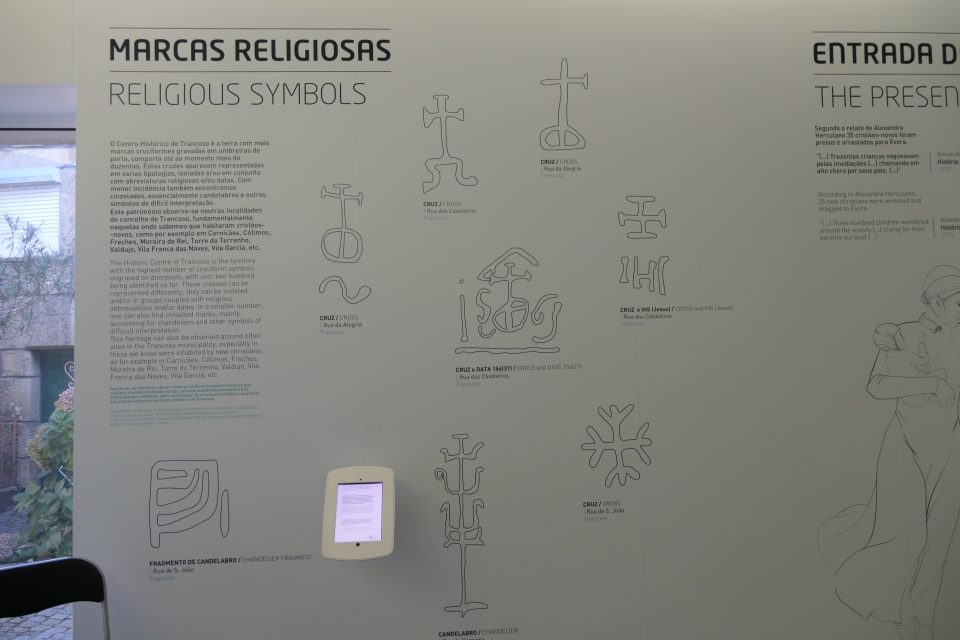
Different symbols indicating New Christian homes 
List of names of the victims of the inquesition
On the second floor, the exhibition is devoted to Isaac Cardoso. Isaac (Fernando) Cardoso was a physicist, philosopher, and Jewish writer born in 1603. The museum details his life and many achievements.
From the center, we went to the museum across the street – Casa do Bandarra. Bandarra was a writer, a prophet and a shoemaker who was the first victim of the Inquisition in Trancoso. His crime was that his poems were based on Jewish ideals. No one really knows for sure if he was Jewish or not. As the guide in the Cardoso Center told us, there are two strong reasons to believe that perhaps he was. First, he was a shoemaker and he was literate. In those times, only the nobility and the Jews knew to read and write. Second, in his works, he referenced the old testament, never the new. Based on this, she thought there is good reason to believe he was Jewish.
In Casa do Bandarra, they first show a nine-minute movie, where they interview older local people, who heard stories about Bandarra from their grandparents. They knew exactly where he lived, and remembered folk tales about him. One that I remember is that a rich merchant was passing through the area when his boot needed repair. The locals sent him to Bandarra to fix his boot. Bandarra repaired the boot and when it came time to pay, Bandarra said, do not pay me now. You will return, and you will meet me half in and half out, and then you can make the payment. The merchant left, not quite sure what Bandarra had meant. Many years went by, and he returned to the town. Bandarra had recently died, and was laying in the church because there were no funds for his burial. The rich merchant said that he would take care of it, This tale was an example of how Bandarra was seen to have prophetic abilities.
Upstairs in Casa do Bandarra, they had a small display about him, including headphones to hear more folktales and learn additional aspects of his life.
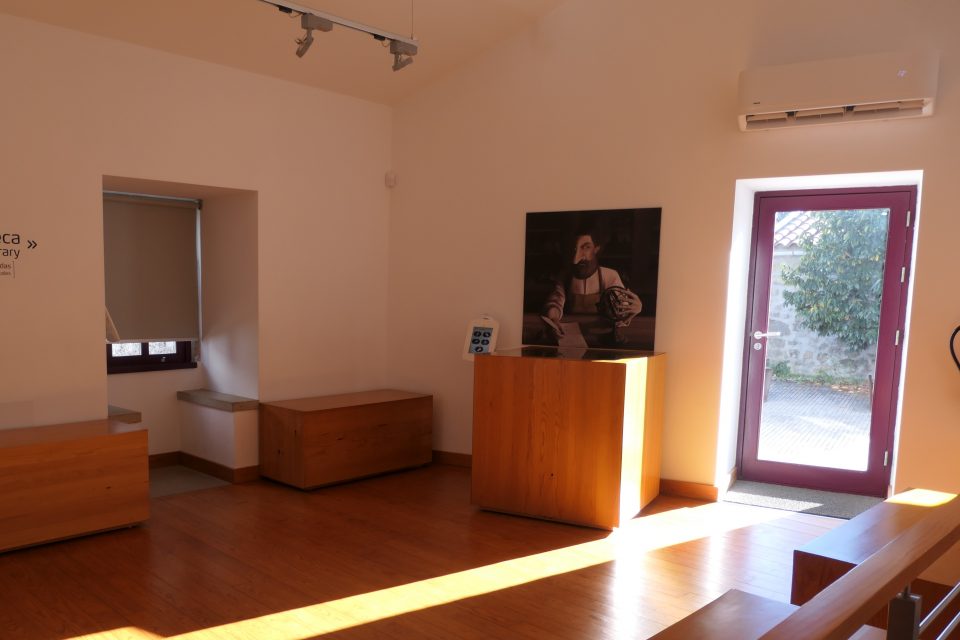
Upstairs in Casa do Bandarra. Interestingly in the portrait, they depict Bandarra with a very large nose.
On the way back from the museum to the car, we spotted more signs carved into the buildings that indicate that New Christians had lived there. In the museum, we had been told that in Trancoso, they have discovered over 250 of them.
Although not as organized in displaying the Jewish Heritage as the village had been, this town had made an effort in putting explainatory signage for the House of the Black Cat and supporting the establishment of the Jewish Cultural Center Isaac Cardoso. Now we were off to the big city Guarda. Would the big city match the village and town in their efforts to highlight Jewish Heritage?
Guarda has a very large historical center, and our hotel was in the center of it. Once again, parking was not easy but we luckily found a spot right in front of the hotel. We dropped off our suitcases and many bags in the room, and went out to discover Guarda. In Wandering Jew, the only site listed was the Jewish Quarter of Guarda, and it’s location was obviously not accurately marked in the app. We needed to find the Jewish area and correct its GPS coordinates. To start, we went to the tourist information. She indicated on a map that there were two main streets in the Jewish quarter. There are signs that explain about the place. In the quarter, she pointed out that there were many houses with indications that a New Christian lived there and they are marked. In the center of the quarter, there is a large Jewish star on the pavement. She knew some of the basics of the history of the Jewish Quarter, and we were soon on our way. As we left the office, she said Shabbat Shalom, which was a surprise.

The cathedral in Guarda
We followed her directions and soon reached the Jewish area. All in all we found eight houses with plaques that indicate New Christian houses with marks on the doorposts that indicate such. Some of the marks were obvious to see, and for some we found no indication of the sign that was supposed to be there. At the corner of the street, was a small plaque indicating this was the Jewish quarter and a graffitied covered sign, with a few explanatory words. The large Star of David, was in a parking lot, and partially covered by cars. Although we really appreciated the signs on the houses to help you find the markings, in general, this was a pretty small effort for a large city, that in the past had a very large and important Jewish community.
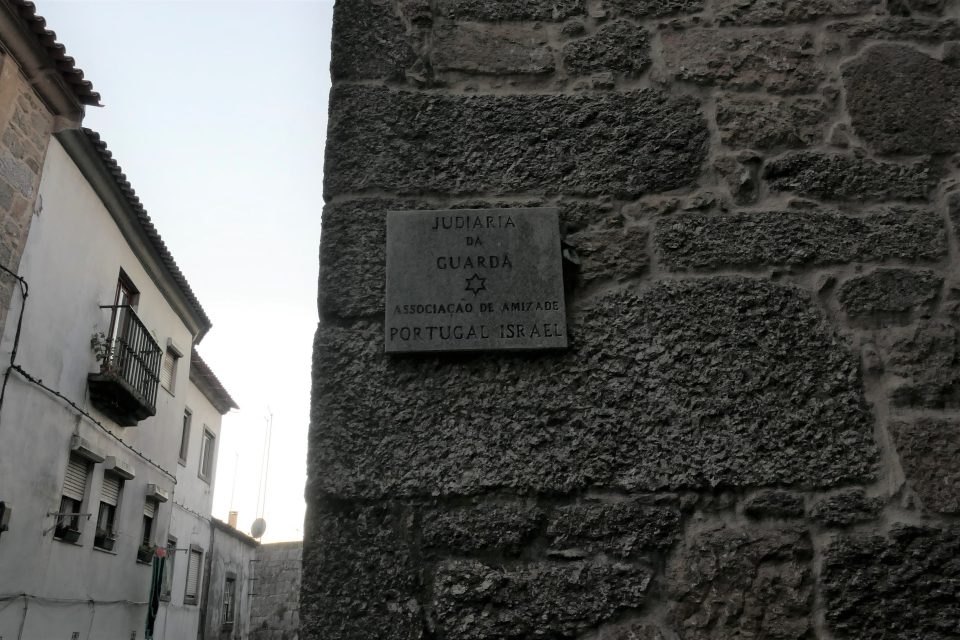
A sign for the Judiaria 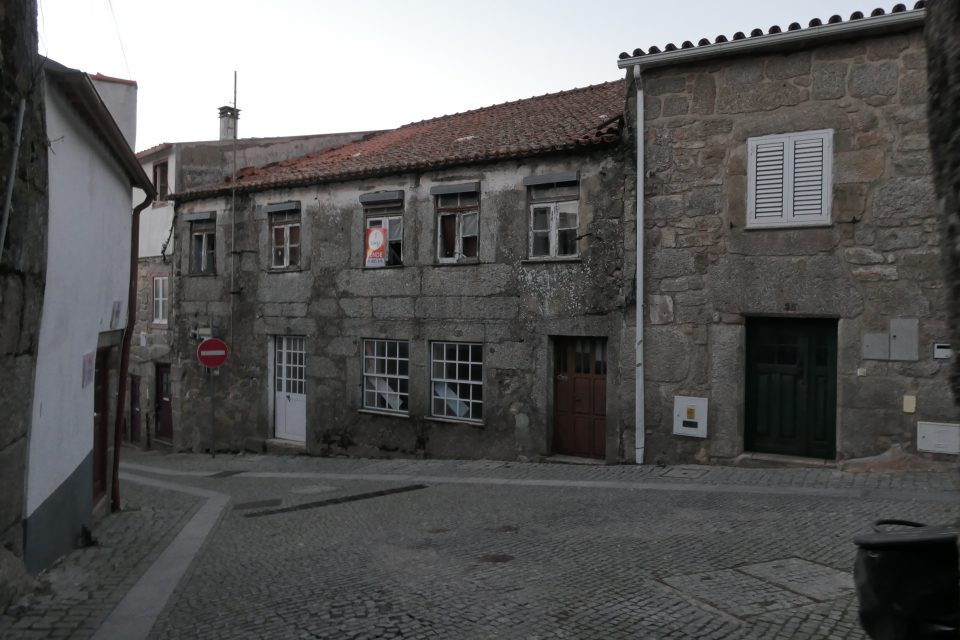
The Judiaria 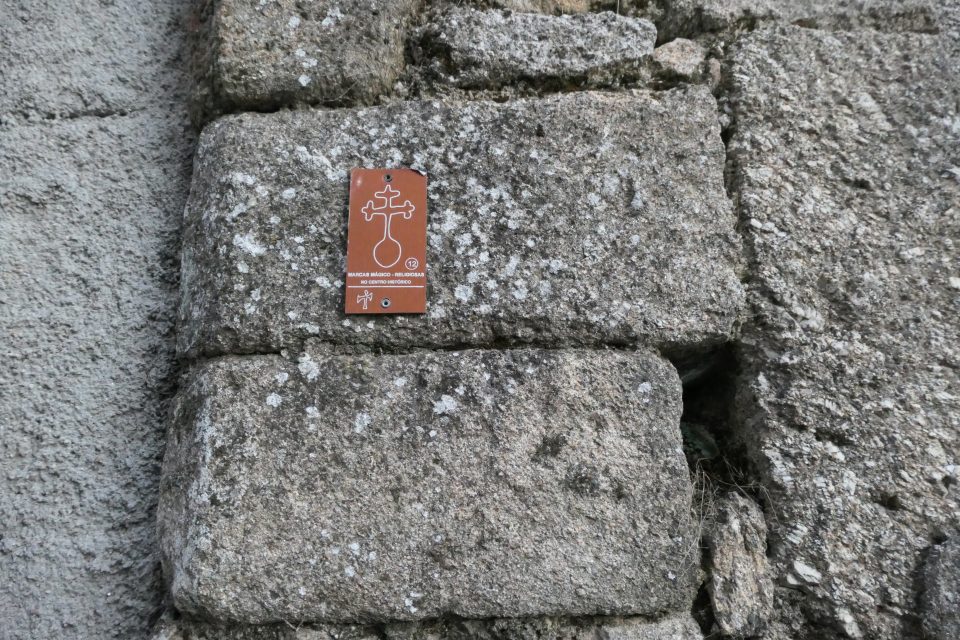
A plaque indicating that this house has the markings of a New Christian home 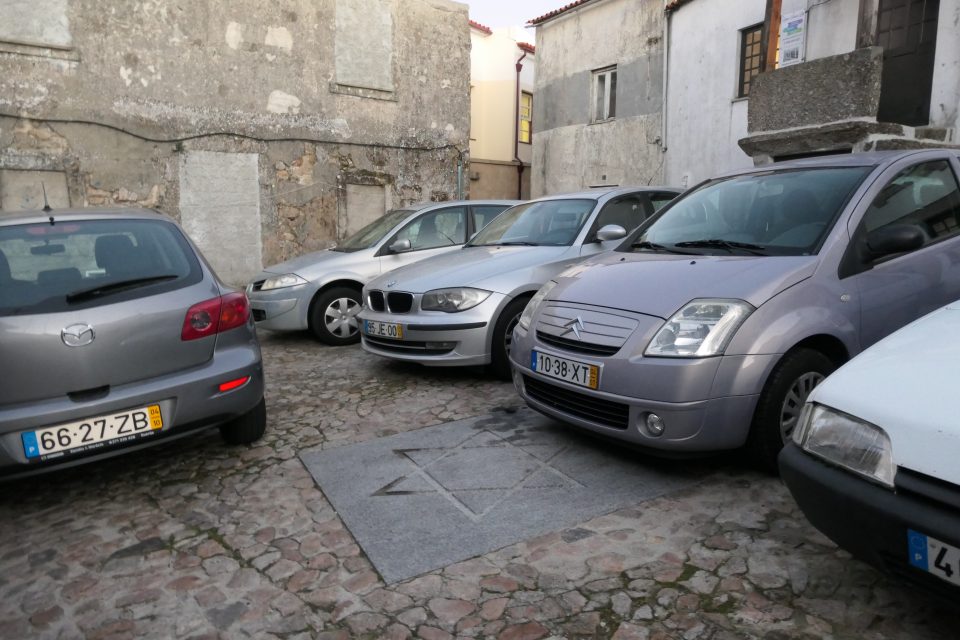
Magen David on the pavement – now a parking lot
So today, it seemed that the village had definitely made the largest effort in showcasing its Jewish Heritage, the town did pretty well, and the city had done the least. Today, small did best.
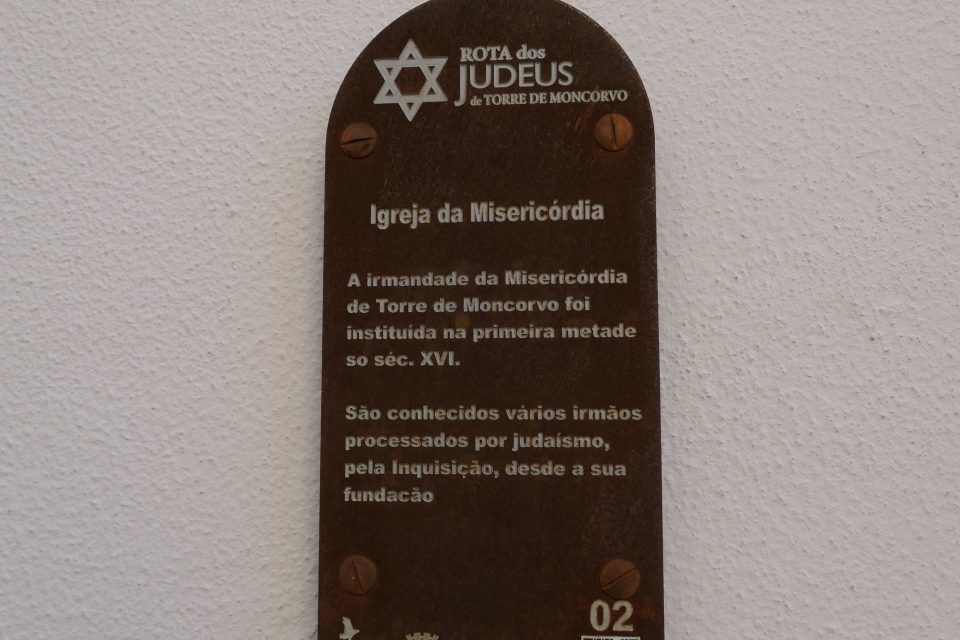
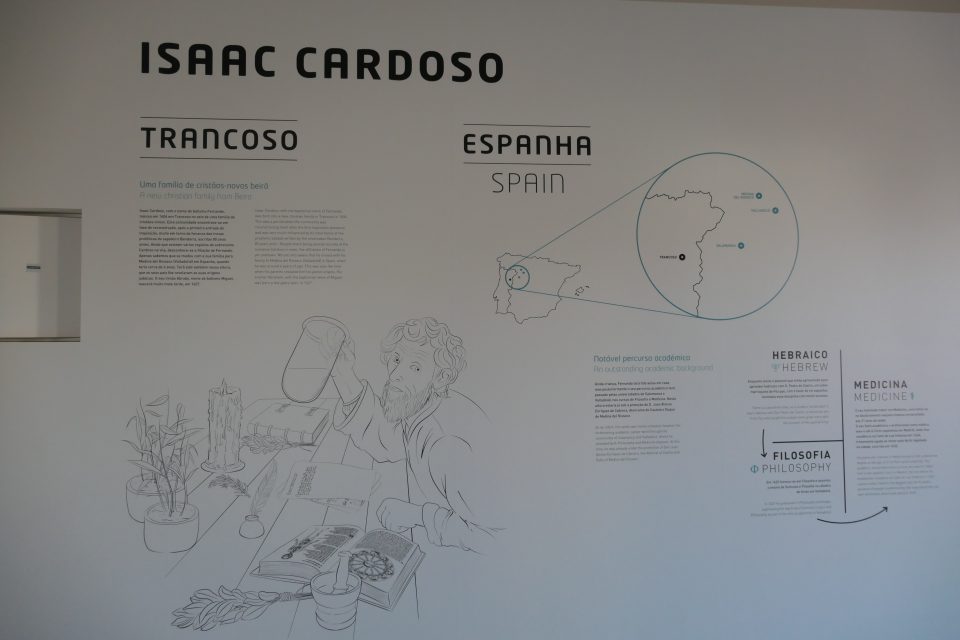

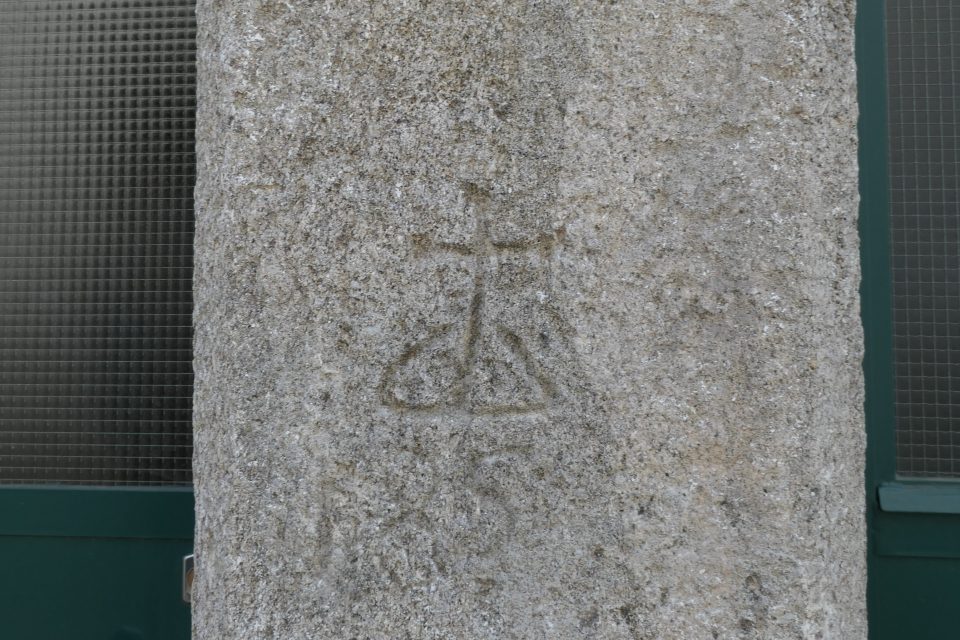
Fascinating